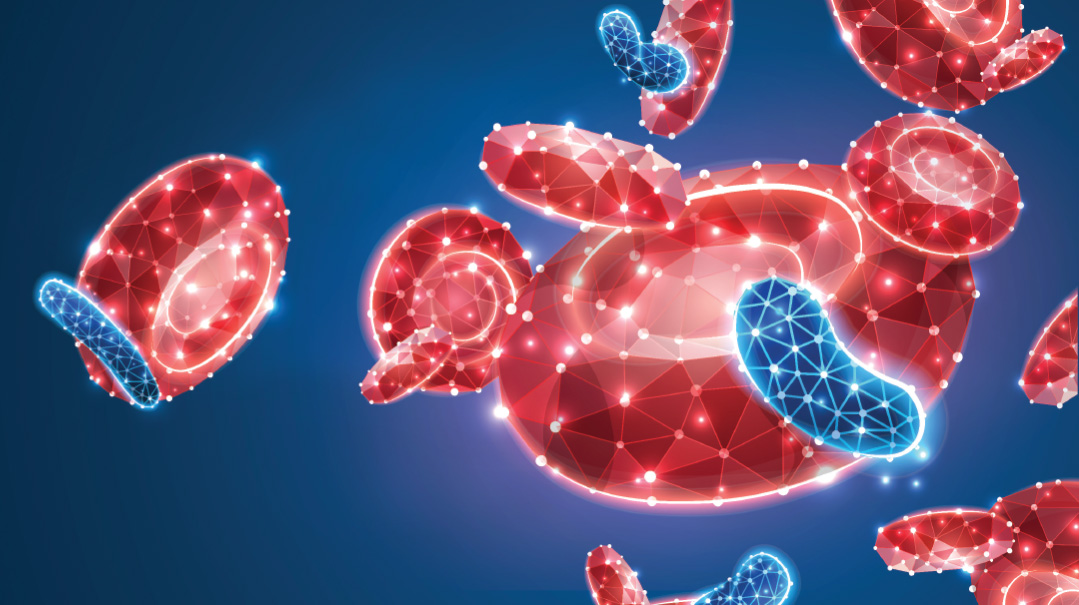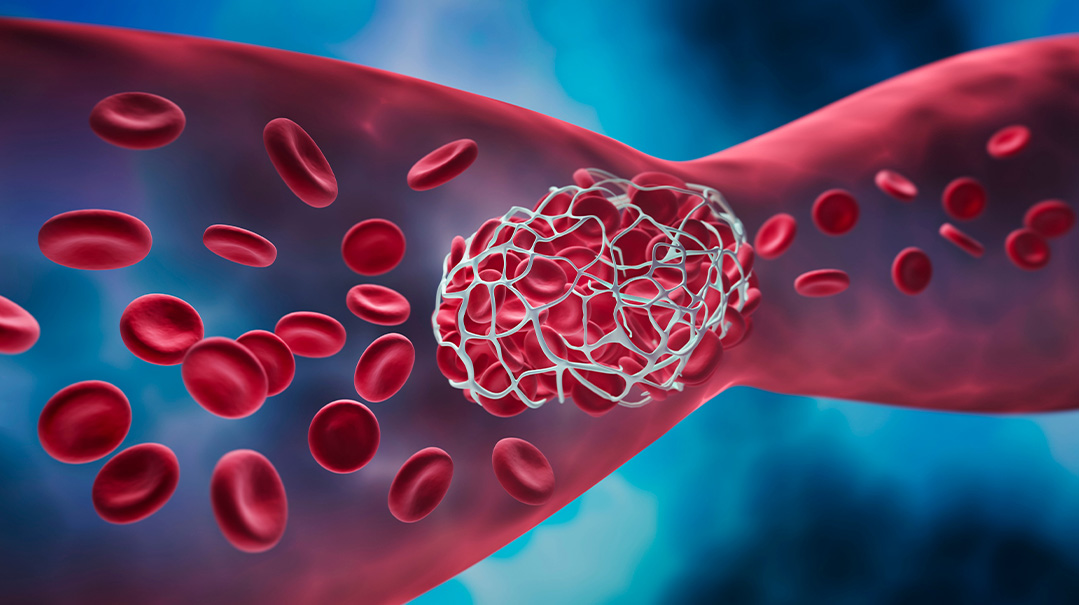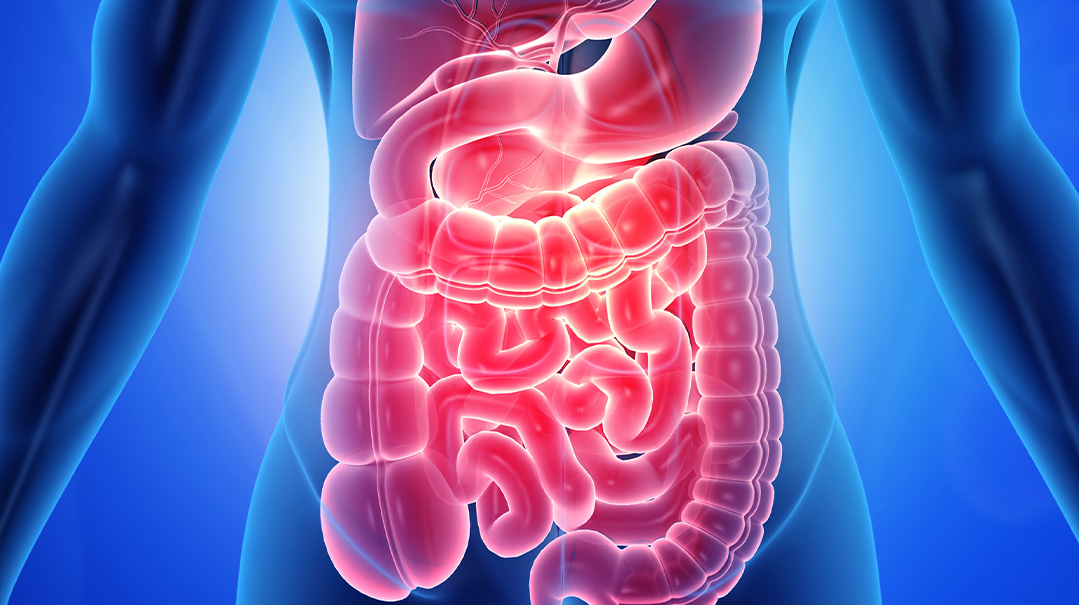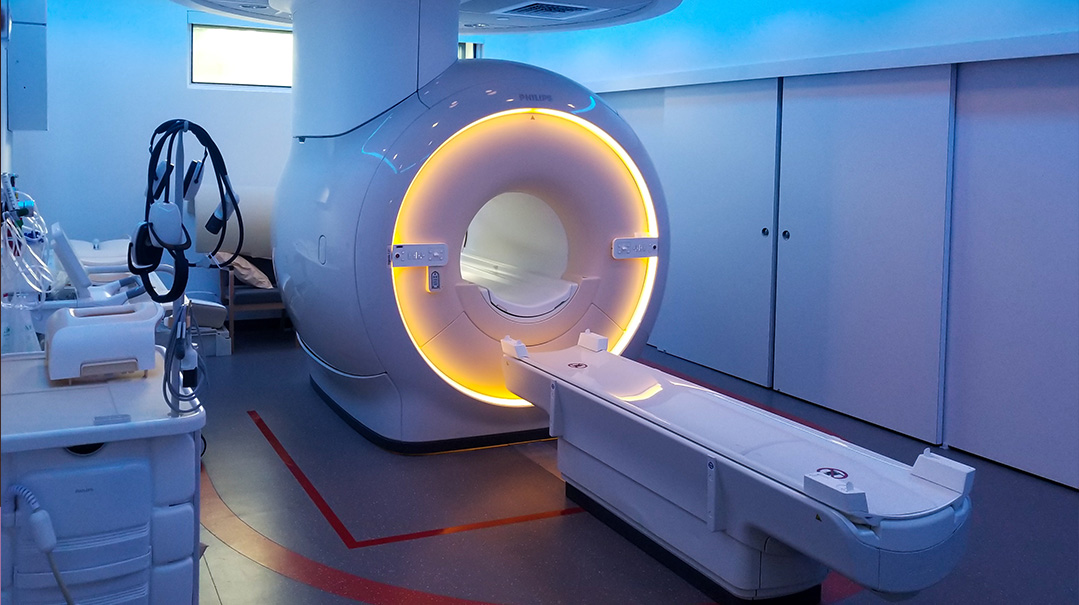True Connection

I had 25 diagnoses. What was behind them all?
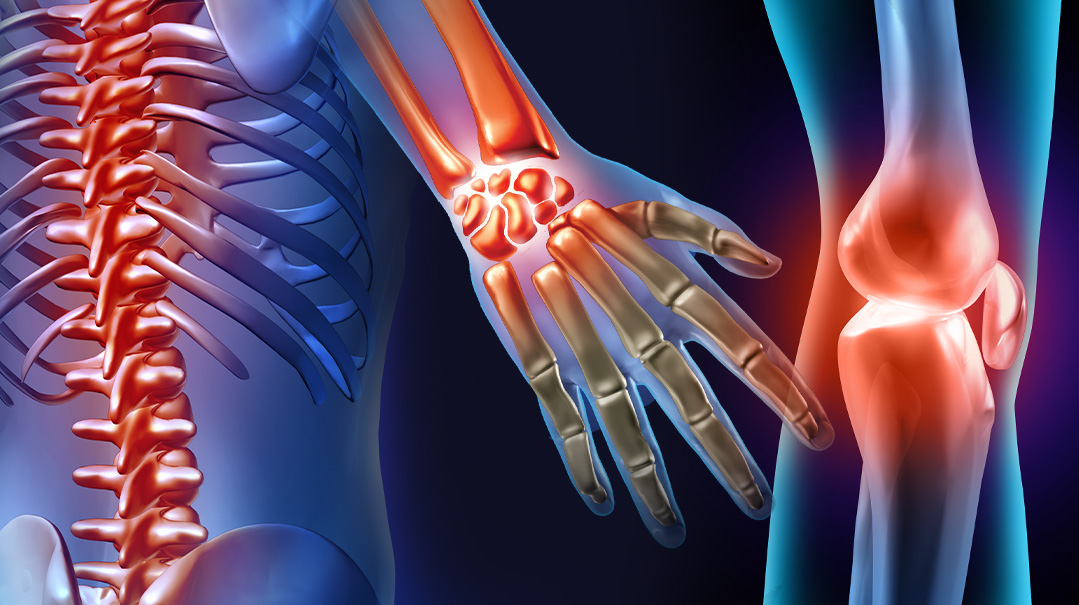
As told to Faigy Peritzman
“T
here’s nothing wrong with you. It’s all in your head!”
I stared at my doctor. At age 16, it was hard to imagine that I had the mental ability to inflict upon myself so much pain and exhaustion. Still, the doctor seemed to be unconvinced that any of my symptoms had physiological roots.
He did suggest that I see a physical therapist to strengthen my joints and muscles, as I was extremely flexible, and he claimed this hypermobility was causing my exhaustion.
I went to physical therapy and did all the exercises they prescribed, but despite my commitment to the routine, I didn’t find it alleviated any of the joint pain or fatigue I was experiencing. If anything, it was getting worse.
I also did blood work that ruled out mononucleosis or arthritis. In light of the results, my doctor concluded that everything was psychosomatic. I was too young to know any better, so I believed him.
Yet despite trying to curb my “unhealthy” thoughts, things didn’t improve over the years. I suffered from multiple rib subluxations, an excruciating experience in which my ribs moved out of place. My skin was always tearing, and I bruised easily. Yet even that paled next to the constant dizziness and fatigue.
I fainted often, and most mornings, I’d lie awake motionless, lacking the physical energy to get out of bed. I had horrible digestive issues, further complicating my daily routine. I couldn’t function on any normal level; studying, working, and completing the daily tasks people take for granted took monumental strength.
After my marriage, I went through many infertility treatments, including several rounds of IVF (unrelated to my subsequent diagnosis). The rigors of dealing with infertility lead my doctors to declare that my now-familiar symptoms of pain and fatigue were simply due to stress. They kept insisting I needed to relax.
I went to therapy, desperate to get myself onto even ground so I could function like a healthy person. But no matter how much I tried to be upbeat and relaxed, it didn’t seem to have any impact on my physical state of being.
At first, my therapist took the recommendations of my doctors that this was all in my head, and told me I was having panic attacks. But even she backed down in the face of my constant fainting, since although panic attacks can cause feelings of being ready to pass out, they usually don’t culminate in actual unconsciousness. So, what was wrong?
Even months after I stopped IVF treatments (baruch Hashem for good reasons), I was still in so much pain. It was clear there was more going on, and my symptoms were not connected to the hormones and treatments I had been doing.
By this point I was older and wiser medically, and I began pushing to figure out what was causing such physical degeneration.
Endless Diagnoses
At 28, I was diagnosed with fibromyalgia due to my constant pain, fatigue, and gut issues. I wasn’t satisfied with this diagnosis as it didn’t cover so many of my other symptoms, like the rib subluxations or bruising.
A few months later, I woke up one night with electric shocks on my face. I was then diagnosed with trigeminal neuralgia — sudden, severe facial pain — and was given medication. But the medication prompted an allergic reaction, and I ended up in the emergency room.
In the hospital, while taking my medical history, they asked if there were other symptoms beyond my joint pain and fatigue. I mentioned that I’d had chest pain since the age of nine. They sent me for an MRI and found a five-centimeter hiatal hernia. A hiatal hernia is when your stomach bulges up into your chest through an opening in your diaphragm. I underwent surgery to fix the hernia, but that still didn’t solve my rib dislocations.
Although each diagnosis addressed some of the issues I was dealing with, there were still others that didn’t fit.
I was eventually diagnosed with about 25 different things, including vasovagal syncope for the constant fainting. But once again, none of these encompassed all of my symptoms. I was very disturbed that every few weeks there was something else happening to my body, and no doctor could put it all together.
Finding the Source
I was living in a country with socialized medicine, and therefore, any time I needed to see a general practitioner, I was admitted to any doctor who was on shift at the time. Consequently, there was no one person who really knew me personally and was following my case.
It was hashgachah that had me in the doctor’s clinic when a frum doctor was on shift. I’d come about one of my many symptoms, but surprisingly, he was more interested in the bigger picture. As he read my case history, he was very bothered.
“You’re much too young to be having so many random issues,” he said with real concern. “I find that often my patients end up being their best advocates since they know their own condition best. What do you think could possibly be causing all this?”
I’d recently read an article on Ehlers-Danlos Syndrome (EDS) and hesitantly mentioned that I thought I fit the parameters. I was nervous to say anything, because all throughout the years, doctors had rejected any of my input regarding my illness, dismissing my thoughts as further proof that all the problems were in my head.
But this doctor was different. As I spoke about EDS, he nodded and said, “You know what? I think you’re on to something!”
He then encouraged me pursue that path, writing referrals for several specialists. He insisted I pay privately for the appointments, as he didn’t feel the national health system would take my opinion seriously enough to provide care.
Thankfully, I was in a position to listen to him, and I saw a gastroenterologist, a neurologist, a cardiologist, and a geneticist. The geneticist diagnosed me with Postural Tachycardia Syndrome (PoTS) and Hypermobility Ehlers-Danlos syndrome (HEDS). PoTS is an abnormal increase in heart rate that occurs after sitting up or standing. HEDS is an abnormality that affects the connective tissue. A person has connective tissue throughout his whole body, even in the nervous system. No wonder I had so many different symptoms!
Learning about my diagnosis was amazing, especially on an emotional level. I finally felt validated — I had proof that my illness was not all in my head. At the same time, the features of the disease were devastating. There is no cure for EDS, and it’s a lifetime condition. (There are 13 types of EDS — hypermobility is one of the more common ones.) Still, I felt such relief that finally there was a specific direction on which I could focus. I allowed myself some time to accept my diagnosis, to mourn the future that will always include pain and difficulty. After a few weeks, I was ready to tackle it head on.
Proactive Action
I was in touch with a physical therapist.
When he heard that I had EDS, he said to me, “If you don’t do something about your EDS now, by the age of 40, you’ll end up in a wheelchair!”
His words galvanized me into action. I didn’t want to even contemplate that scenario. I hired a personal trainer to come to my house every single day, to do strength training and Pilates.
There were still days when I was so exhausted that I couldn’t get out of bed, but I didn’t let those days go by without some sort of exercise, even bedridden. I knew if I gave in, and allowed myself to stay in bed, I would never get out of it.
Having a personal trainer who was experienced in EDS was a game changer. People with EDS have hypermobility that causes their joints to be less stable, leading often to dislocations or in my situation, rib subluxations. The physical therapy I had done as a teen was actually bad for me because it relied a lot on stretches and yoga, something that’s terrible for EDS. We needed to do the opposite — to keep our muscles firm so they would hold our joints and not allow them to stretch and dislocate.
In the beginning when I started the therapy work, I was so weak I couldn’t even lift a water bottle, but I persisted. Again, I had to pay for all of this out of pocket, a tremendous financial drain, as insurance would only cover a communal weekly pilates or general exercise class. Now, after a few years of consistent daily exercise, I’m able to lift 20-kilogram (40-pound) weights. I’m a new person! Years ago, I couldn’t even sit up properly — I simply couldn’t hold myself up. Now I can hold things while standing.
Many people with EDS have very mild symptoms — sometimes hip or wrist hypermobility. But there are many who suffer as much as I did.
Furthermore, my years battling infertility took its toll on my body due to the amount of bed rest I was forced to endure. My muscles atrophied even more, causing me much more pain and exhaustion.
I now understand my body and how I need to treat it. If I push myself too much during the day, I will literally collapse, so I constantly have to be aware of my abilities and how to work my life around them.
I have an incredible support system in my husband and children. My friends are lifesavers, assisting me with school pickups, babysitting, and meals.
Emunah Carries Me Through
Despite all my limitations, I wouldn’t trade my diagnosis for anything. I know what it means to live with chronic illness, but it’s because of this condition that I also know what it means to live with constant yad Hashem.
I see Hashem’s hashgachah in every aspect of my daily life. It was clearly Hashem’s help that led me to the frum doctor’s office, who took my idea of EDS seriously. I see His help in the fact that I have so many people to support me emotionally and physically, as well as financial ability to give myself the medical help I need. It’s really sad when sufferers of EDS don’t have the money and can’t navigate within the socialized system.
When chronic illness hits, people are in constant pain, so they aren’t motivated to get the help they need. Yet they don’t realize that the more they don’t help themselves, the more pain they’re causing themselves.
I think back to the days as a teen when I was so sick but had no idea what to do to help myself. I remember one morning when I was simply so exhausted, I couldn’t get out of bed. My parents were concerned and decided to take me to the hospital to run blood work to get to the bottom of my issues. When they went out of my room to make the arrangements, I lay in bed all alone. I poured out my heart to Hashem, begging Him to help me figure out what was wrong, and to give me health. It took many years for the actual diagnosis to come, but I never wavered from staying connected to Hashem, asking Him to guide me.
I’ve come in contact with many people who deal with chronic illness, both EDS and other conditions. I once had a pilates instructor who had Crohn’s disease. She was an atheist and was very bitter about her condition. What was the purpose of her life if she was always in pain? While working together, we’d have many discussions about this topic. Eventually, she told me that her husband was getting annoyed at her because she was beginning to believe in G-d.
Having a chronic disease is difficult and painful. Without emunah, there is no point to ongoing pain. But with emunah, we can find the many chasadim Hashem bestows upon us, no matter what nisayon we are dealing with.
What is EDS?
Ehlers-Danlos syndrome is an inherited condition that affects a person’s connective tissues, mostly the skin, joints, and blood vessel walls. EDS is manifested by the extra elasticity in this connective tissue, causing joints to be too flexible or the skin to be too fragile.
There are many different types of Ehlers-Danlos syndrome, but the most common type is called hypermobile Ehlers-Danlos syndrome.
Signs and Symptoms
Symptom severity can vary from person to person and depends on the specific type of Ehlers-Danlos syndrome.
Overly flexible joints: Because the connective tissue that holds the joints together is more elastic, the joints can move beyond the proper range of motions, causing pain and dislocations.
Stretchy, fragile skin: The connective tissue allows the skin to stretch much more than usual, causing tears that may take longer to heal, and leaving scars.
Vascular Ehlers-Danlos syndrome: This type often comes with distinctive facial features of a thin nose, thin upper lip, small earlobes, and prominent eyes. The skin is also thin and bruises easily. In light-skinned people, the underlying blood vessels are very visible through the skin.
Diagnosis
Extremely loose joints, fragile or stretchy skin, and a family history of Ehlers-Danlos syndrome are often enough to make a diagnosis. Genetic testing can confirm the diagnosis. Different types of Ehlers-Danlos syndrome are associated with a variety of genetic causes, some of which are inherited and passed from parent to child. The most common form, hypermobile Ehlers-Danlos syndrome, carries with it a 50 percent chance that the gene will be passed to the next generation.
Treatment
As yet, there’s no cure for Ehlers-Danlos syndrome, but there is treatment to help manage symptoms and prevent complications.
Medications:
Over-the-counter pain relievers can help keep pain to a minimum.
Blood pressure medication is also commonly used to reduce the strain on the blood vessel walls.
Physical therapy:
Exercises to strengthen the muscles and stabilize joints are the primary treatment for Ehlers-Danlos syndrome. It’s essential that your exercise instructor be familiar with the protocol for EDS.
Complications
Complications depend on the type of EDS. Overly flexible joints and frequent dislocations can lead to early-onset arthritis. Frequent skin lesions can lead to infections. With vascular Ehlers-Danlos syndrome, there are higher risks of rupture of major blood vessels and arteries or even organs, such as the uterus and intestines. These ruptures can be fatal, so constant care and caution must be taken.
Information from the Mayo Clinic
Did you ever have a medical problem that you were told “is nothing to worry about,” and it ended up being a serious issue? Did you have symptoms that stymied doctors? We believe sharing our journeys can bring awareness, empathy, and a sense of connection to those who’ve gone through a medical crisis. If you had a medical mystery and would like to be part of this column, please send a brief description of your story to familyfirst@mishpacha.com
(Originally featured in Family First, Issue 799)
Oops! We could not locate your form.


